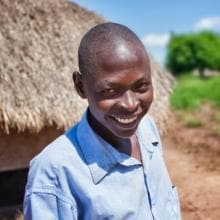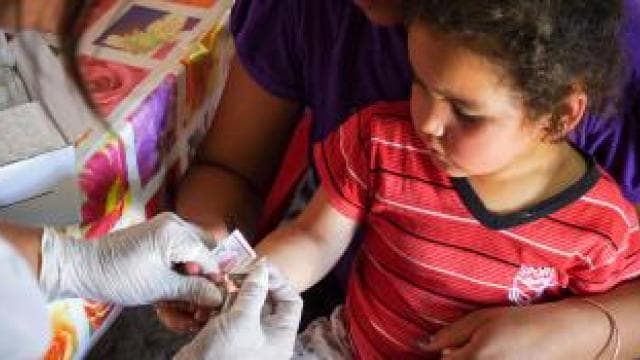African Sleeping Sickness

- Health at Bayer
-
Pharmaceuticals
- Treatment Areas
- Innovation & Technologies
- Cell and Gene Therapy
-
Sustainability
- Patient Access Charter
- Leadership Perspective
- Strengthening Healthcare Access
- Moving Non-Communicable Diseases Care Forward
- Ensuring a Sustainable Product Supply
- Delivering Better Cancer Care
-
Empowering Women, Globally
- Boosting Family Planning Usage through Digital Channels
- Capacity building: Addressing Root Causes through Partnerships
- Impact at Scale: The Challenge Initiative
- Promoting Awareness: World Contraception Day (WCD) & the Your Life Campaign
- Providing Accessible and Affordable Contraceptives
- Enabling Family Planning in Humanitarian Settings
- Fighting Neglected Tropical Diseases
- Transparency
- News & Stories
- Personal Health
- Report a Side Effect
- Medical Counterfeits
African sleeping sickness is treacherous and deadly. In addition, social stigma complicates the long path of suffering of patients. Also known as Human African Trypanosomiasis (HAT), the disease threatens millions of people in many sub-Saharan countries.
How dangerous is human African trypanosomiasis?
Human African trypanosomiasis is potentially fatal if it is not treated as soon as possible. When not treated early, particularly in the second stage, there is a high risk of remaining handicapped.
Who is at risk?
People living in rural areas and depending on farming, fishing, live-stock breeding or hunting are most exposed to the tsetse fly and therefore the disease. Even in areas where the disease is present, most flies do not carry the parasite, so the risk of infection increases with the number of times a person is bitten by a tsetse fly. Tourists are not at great risk for contracting human African trypanosomiasis unless they are traveling and spending long periods of time in rural areas of the tropical of Africa (e.g. game reserves) where the disease is present. Travelers to urban areas are not at risk.
How many people are affected?
Due to massive interventions of WHO, in 2009 the number reported dropped below 10 000 for the first time in 50 years and further decreased to less than 2000 reported cases in 2017. However, there are still cases that are not diagnosed and or reported due to e.g. inaccessibility of some endemic areas because of armed conflicts. Where is African trypanosomiasis found?
Sleeping sickness occurs in 36 sub-Saharan Africa countries where there are tsetse flies that transmit the disease. The more common type of the disease, infection with trypanosoma brucei gambiense, is found in 24 countries in West and central Africa. This form currently accounts for 98 percent of reported cases of sleeping sickness and causes a chronic infection. Over 95 percent of the reported cases are found in the Democratic Republic of Congo, Angola, Sudan, the Central African Republic, the Republic of Congo, Chad, and northern Uganda.

Where is African trypanosomiasis found?
Sleeping sickness occurs in 36 sub-Saharan Africa countries where there are tsetse flies that transmit the disease. The more common type of the disease, infection with trypanosoma brucei gambiense, is found in 24 countries in West and central Africa. This form currently accounts for 98 percent of reported cases of sleeping sickness and causes a chronic infection. Over 95 percent of the reported cases are found in the Democratic Republic of Congo, Angola, Sudan, the Central African Republic, the Republic of Congo, Chad, and northern Uganda.
How do people get the disease?
A person gets human African trypanosomiasis through the bite of an infected tsetse fly. Occasionally a pregnant woman may pass the infection to her baby. In theory, the infection can be transmitted through a blood transfusion, but such cases rarely have been documented.
Bayer contribution
Bayer provides two substances which are used in the fight against human African trypanosomiasis. Both are on the WHO's list of essential drugs Since 2000 Bayer has been supporting the WHO with donated medicines. Since 2013 financial contribution to implement WHO mobile intervention teams in the DR Congo, the country with the highest disease burden of African sleeping sickness.














